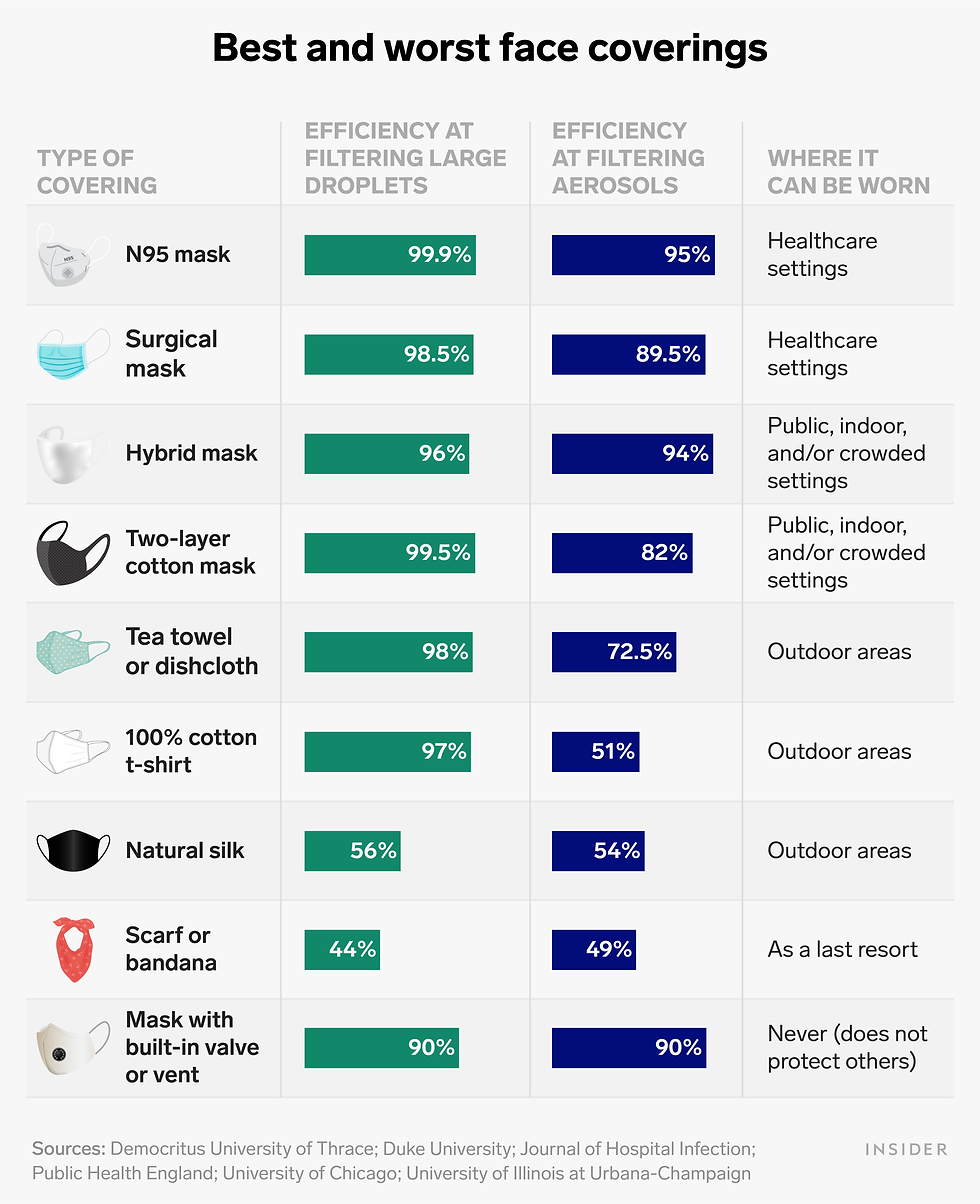The Best Face Masks for Your Organization (Infographic)
- Advent Life

- 9.09.2020 г.
- време за четене: 3 мин.
Make the best PPE choice for your organization. Consult the latest infographic charting the effectiveness of face masks from best to worst.

Wearing a face mask in public and at work has become the norm across the world as this simple measure significantly limits the spread of the coronavirus.
The effectiveness of certified face masks for Covid-19 prevention is now a scientific fact, but new research may help to improve our knowledge further.
What makes an effective face mask?
It’s important to review the advice shared by health organizations when it comes to choosing the best type of face masks for organizations.
High filtration
Face masks that can block large droplets and small airborne particles offer the best protection. The most well-known types of masks with a high filtration capacity include FFP3 masks, N95 masks, and surgical masks. Their high effectiveness makes them especially suitable for healthcare settings where workers may be directly exposed to the virus.
Good fit
To prevent contagious particles from leaking around the sides of the mask, face masks should ideally provide a tight seal around the nose and the mouth.
The contoured design (also known as “duck shape”) ensures that the mask sits snugly around the face. The comfortable fit of the mask will also help wearers refrain from adjusting it so that the mask stays clean when worn for long periods.
High thread counts
Materials that are woven tightly make for an effective face mask. Fabrics with higher thread counts are better at filtering large particles, and even smaller aerosols.
“Combining two layers of 600-thread-count cotton paired with another material like silk, chiffon, or flannel filtered at least 94% of small particles (less than 300 nanometers) and at least 96% of larger particles (bigger than 300 nanometers),” a study from the University of Chicago found.
Multiple layers
The official recommendation of the World Health Organization (WHO) is to opt for face coverings that have three layers. Each layer is designed to protect the wearer, while still ensuring unobstructed breathing. The inner layer should be able to absorb easily, the middle layer should filter particles of different sizes, and the outer layer should be made from a nonabsorbent material like polyester.
When all of these aspects are present, and combined with physical distancing and good hand hygiene, face masks offer additional protection in places where a lot of people gather.

Source of visual: Yuqing Liu/Business Insider
Avoid these two types of face coverings
Any mask is better than no mask – remember this as a general rule of thumb. However, the latest research has highlighted two types of face coverings that are not suitable in the context of Covid-19.
Bandanas and scarves do not provide the most effective protection, both for personal use and in the work environment.
“The Journal of Hospital Infection study found that a scarf reduced a person’s infection risk by only 44% after they shared a room with an infected person for 30 seconds. After 20 minutes of exposure, the scarf reduced infection risk by just 24%,” Business Insider reports. Bandanas and scarves do not usually have a tight seal around the nose and the chin, which makes the people who wear them more vulnerable to infection.
Wearing a face mask with a built-in valve is also highly discouraged by the Centers for Disease Control and Prevention (CDC) and other health authorities. The one-way valve can expel infectious particles into the atmosphere, helping to fuel transmission of the virus.
Still unsure about the best type of face masks for your organization? Get in touch today to receive a free recommendation from our PPE advisors.



Коментари